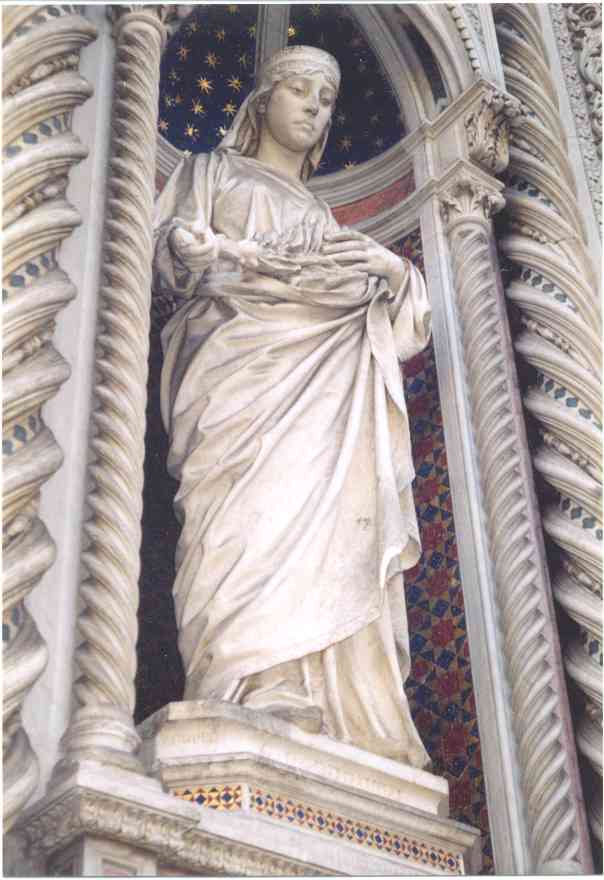
Florence Cathedral, facade, credit Wikipedia
Endnotes, January 2023
In this edition: Vaughan Williams from Midori Komachi and Simon Callaghan; orchestral fresco of Florence by Randall Svane, reviewed by Stuart Millson
In recent years, Midori Komachi has emerged as one of the most sensitive exponents of chamber music. With many impressive concert credits to her name: London, Warsaw, Tokyo ~ and even enterprising commercial relationships with airlines for in-flight musical entertainment ~ Midori effortlessly crosses national borders and musical genres. Several years ago, her sublime recording of Debussy’s Violin Sonata was characterised in this column as a performance of rare, subtle colours. Usually such an international performer of the younger generation would cultivate a cosmopolitan repertoire (i.e. not one centred on English romantic pastoral music, written by some tweed-jacketed, supposedly old-fashioned inhabitant of a Surrey country house). Not so, Midori. Here she is performing a remarkable collection on the MusiKaleido label in Vaughan Williams’s Sonata for Violin and Piano in A Minor, written, like the Debussy sonata, late in the composer’s life.
A piece from a Vaughan Williams era that includes the South Polar ice-wastelands of the Seventh Symphony and the unexpectedly spiky Eighth, the sonata is cast in three movements: Fantasia, Scherzo and Tema con variazioni ~ titles which themselves are reminiscent of the movements of Symphony No. 8. The sonata is a chamber work of substance, lasting the best part of half an hour; quite a muscular challenge, as well as musical, but nothing remotely insurmountable for Midori and her accompanist and fellow interpreter, the pianist Simon Callaghan ~ who emerges in this 1954 Vaughan Williams piece as a profound interpreter and exponent in his own right. (It would be good to hear Mr. Callaghan perform the Vaughan Williams Piano Concerto ~ and, incidentally, when will we hear Midori in the Elgar or Bax Violin Concertos? CD companies: please take note.)
The chamber version of The Lark Ascending is also included on this disc: that famous and popular work which begins on English downland, but which ends in a mysterious region almost beyond this earth ~ and needless to say, Midori paints the heavens in which the lark sings with glorious colours and fine shading. The latter qualities are also in evidence in the Six Studies in English Folk Song (dated 1926), a work which this reviewer first discovered on the Chandos label, quite close to the outset of the CD era, and performed on disc in a clarinet and piano arrangement. The violin, instead of woodwind, works equally as well, serving those ‘lost’, remote, heartfelt fragments of folk music in a different way: bringing them, perhaps, more into the salon or the recital hall, but still grasping the essentially outdoor aura of the sequence.
Recorded in the Wyastone Recording Studio, Monmouthshire, in the English-Welsh border country, what better venue could there be for Vaughan Williams, born in nearby Gloucestershire, a composer who captured for all time a folk music heritage destined otherwise to be swept away by globalisation? A Japanese violinist emerging as an exponent of this quintessentially English music would, without doubt, have delighted Ralph Vaughan Williams.
On a visit to Florence to hear a performance of his Concerto for Strings, the United States contemporary composer, Randall Svane, became overwhelmed by the scene in the Piazza del Duomo and decided to condense his reactions and emotions into a ten-minute orchestral work, Evocation and Remembrance. An orchestral procession through the early glories of European art and civilisation, the piece opens with hushed strings playing a repeated, portentous theme (reminiscent of the delicacy and sensation of tension at the opening of Nielsen’s Fifth Symphony) ~ the work broadening out into grand vistas; the composer unafraid of making a big, affirmative, almost romantic-era symphonic statement. Randall Svane is a cathedral-builder in music: this is music to believe in: this is music of belief.
Stuart Millson is the Classical Music Editor of The Quarterly Review
CD details: Works for Violin and Piano by Vaughan Williams, Midori Komachi (violin), Simon Callaghan (piano). MKCD002. Randall Svane’s Florence-inspired tone-poem comes in the form of an MP3 file of a concert given by the University of Southern California Symphony Orchestra. For further details of his music, go to www.randallsvane.com










